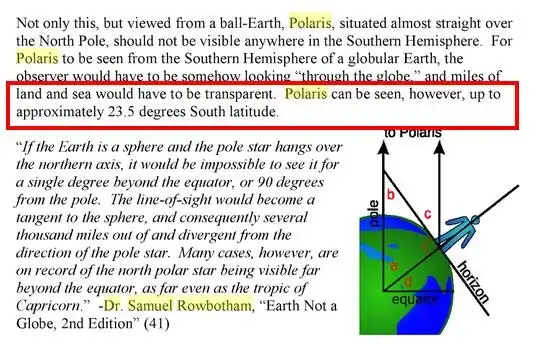The current night sky as seen from Nairobi, Kenya (1°17′ south latitude) and from Darwin, Australia (12°27′ south latitude) are shown below.
Nairobi, Kenya night sky:

Darwin, Australia night sky:

Sources: https://www.fourmilab.ch/cgi-bin/Yoursky
Nairobi, Kenya is just south of the equator, so at the right time of the year (this is the right time of the year), Polaris is barely visible in the Nairobi nighttime sky. It's the star just above the "N" (for "North") at the very bottom of the first image. Polaris would not be visible from Nairobi if the Earth had no atmosphere. But it does have an atmosphere. Atmospheric refraction enables us to see objects 34 arc minutes below the horizon. This below the horizon viewing is built-in in modern star chart software.
A tiny bit of Ursa Minor (the Little Dipper) is visible at this time of year from Darwin, Australia. Polaris is not a part of the picture as seen from Darwin. While parts of Ursa Minor can indeed be seen from the northern portions of Australia, Polaris cannot. At a bit over 12 degrees south latitude, all one can see of Ursa Minor are the bright stars Kochab and Pherkad -- but not Polaris.
Polaris can be seen, however, up to approximately 23.5 degrees South latitude.
This was a lie 160 years ago when first issued by Samuel Rowbatham. It remains a lie to this day. It would have been hard 160 years ago to find someone had been to Australia and came back to tell the tale. That's not the case nowadays. You don't even have to fly around the globe. The internet is good enough.
People all over the world use tools such as the site referenced above to look at the night sky. They see exactly what those star charts suggest they will see. I myself have seen Polaris very high in the nighttime sky in Stockholm, and the Southern Cross very high in the nighttime sky in Buenos Aires. I did not see the Southern Cross in Stockholm, nor did I see Polaris from Buenos Aires.


